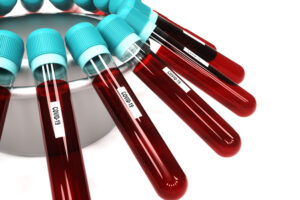Scientists at the University of California (UC) San Diego School of Medicine along with collaborators have discovered a connection between cellular metabolism and depression. They found that people with depression and suicidal ideation had detectable compounds in their blood that could help identify individuals at higher risk of becoming suicidal. The researchers also found sex-based differences in how depression impacts cell metabolism.
While the primary symptoms of depression are psychological, scientists and doctors have come to understand that depression is a complex disease with physical effects throughout the body. Measuring biomarkers of cellular metabolism has become an important approach to studying mental illnesses and developing new ways to diagnose, treat, and prevent them.
The current study “Metabolic features of treatment-refractory major depressive disorder with suicidal ideation,” published in Translational Psychiatry, could help personalize mental health care and potentially identify new targets for future drugs.
“Peripheral blood metabolomics identified mitochondrial dysfunction and reductive stress as common denominators in suicidal ideation associated with treatment-refractory major depressive disorder. Individualized metabolic differences were found that may help with personalized management,” write the researchers.
“Mental illnesses like depression have impacts and drivers well beyond the brain,” said Robert Naviaux, MD, PhD, a professor in the department of medicine, pediatrics, and pathology at the UC San Diego School of Medicine. “Prior to about ten years ago it was difficult to study how the chemistry of the whole body influences our behavior and state of mind, but modern technologies like metabolomics are helping us listen in on cells’ conversations in their native tongue, which is biochemistry.”
Treatment-refractory
While many people with depression experience improvement with psychotherapy and medication, some people’s depression is treatment-refractory, meaning treatment has little to no impact. Suicidal thoughts are experienced by the majority of patients with treatment-refractory depression, and as many as 30 percent will attempt suicide at least once in their lifetime.

While there were clear differences in blood metabolism between males and females, a number of metabolic markers of suicidal ideation were consistent across both sexes. This included biomarkers for mitochondrial dysfunction, which occurs when the energy-producing structures of our cells malfunction. [Dowell/Getty Images]
The researchers analyzed the blood of 99 study participants with treatment-refractory depression and suicidal ideation, as well as an equal number of healthy controls. Among the hundreds of different biochemicals circulating in the blood of these individuals, they found that five could be used as a biomarker to classify patients with treatment-refractory depression and suicidal ideation. However, which five could be used differed between men and women.
“If we have 100 people who either don’t have depression or who have depression and suicidal ideation, we would be able to correctly identify 85–90 of those at greatest risk based on five metabolites in males and another five metabolites in females,” continued Naviaux. “This could be important in terms of diagnostics, but it also opens up a broader conversation in the field about what’s actually leading to these metabolic changes.”
While there were clear differences in blood metabolism between males and females, a number of metabolic markers of suicidal ideation were consistent across both sexes. This included biomarkers for mitochondrial dysfunction, which occurs when the energy-producing structures of our cells malfunction.
“Mitochondria are some of the most important structures of our cells and changed mitochondrial functions occur in a host of human diseases,” added Naviaux.
Mitochondria produce ATP, the primary energy currency of all cells. ATP is also an important molecule for cell-to-cell communication, and the researchers hypothesize it is this function that is most dysregulated in people with suicidal ideation.
“When ATP is inside the cell it acts like an energy source, but outside the cell it is a danger signal that activates dozens of protective pathways in response to an environmental stressor,” explained Naviaux. “We hypothesize that suicide attempts may actually be part of a larger physiological impulse to stop a stress response that has become unbearable at the cellular level.”
Because some of the metabolic deficiencies identified in the study were in compounds that are available as supplements, such as folate and carnitine, the researchers are interested in exploring the possibility of individualizing depression treatment with these compounds to help fill in the gaps in metabolism that are needed for recovery. Naviaux added that these supplements are not cures.
“None of these metabolites are a magic bullet that will completely reverse somebody’s depression,” said Naviaux. “However, our results tell us that there may be things we can do to nudge the metabolism in the right direction to help patients respond better to treatment, and in the context of suicide, this could be just enough to prevent people from crossing that threshold.”
In addition to suggesting a new approach to personalize medicine for depression, the research could help scientists discover new drugs that can target mitochondrial dysfunction, which could have wide implications for human health in general.



